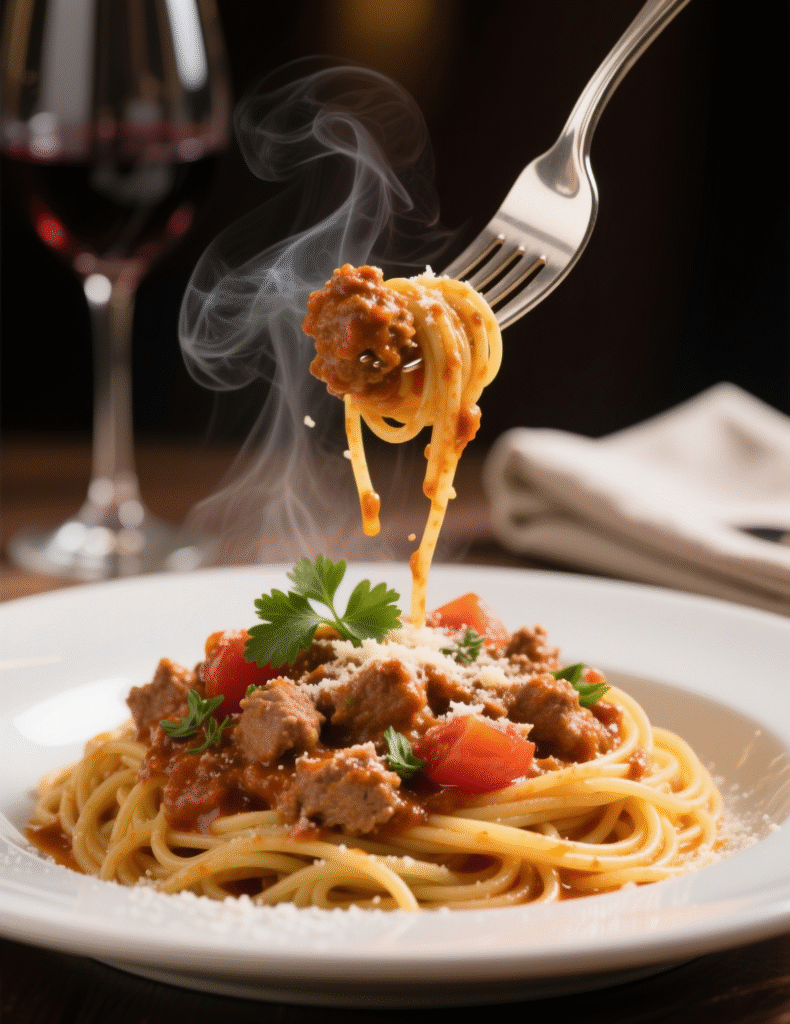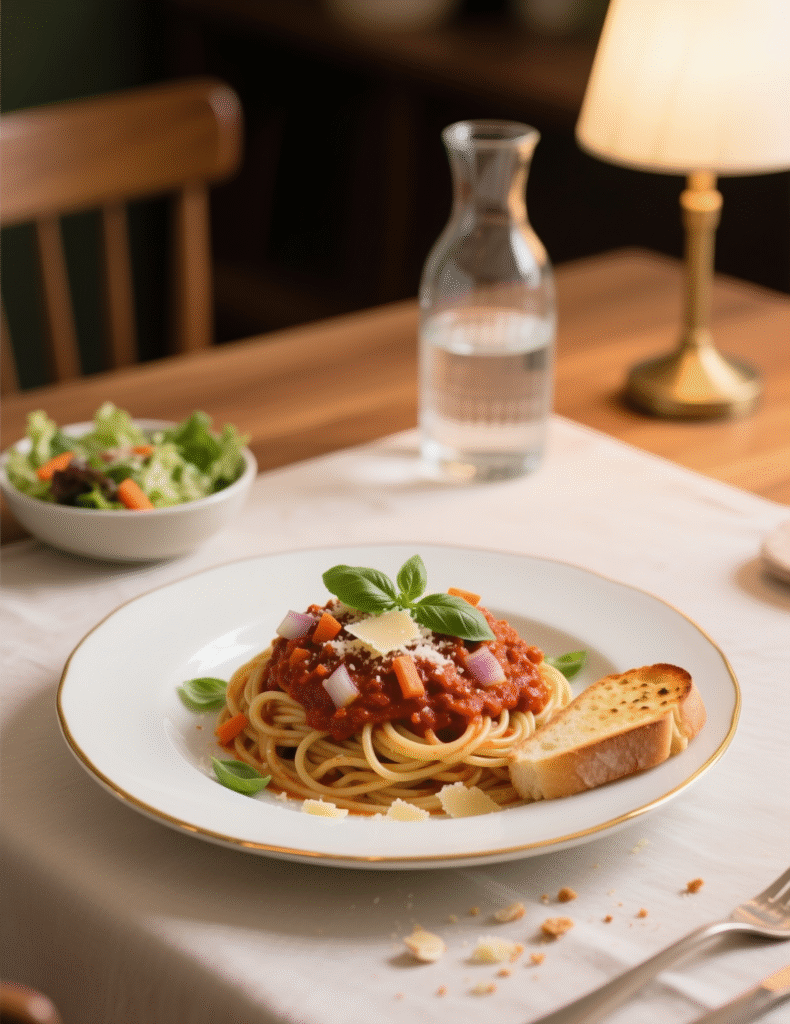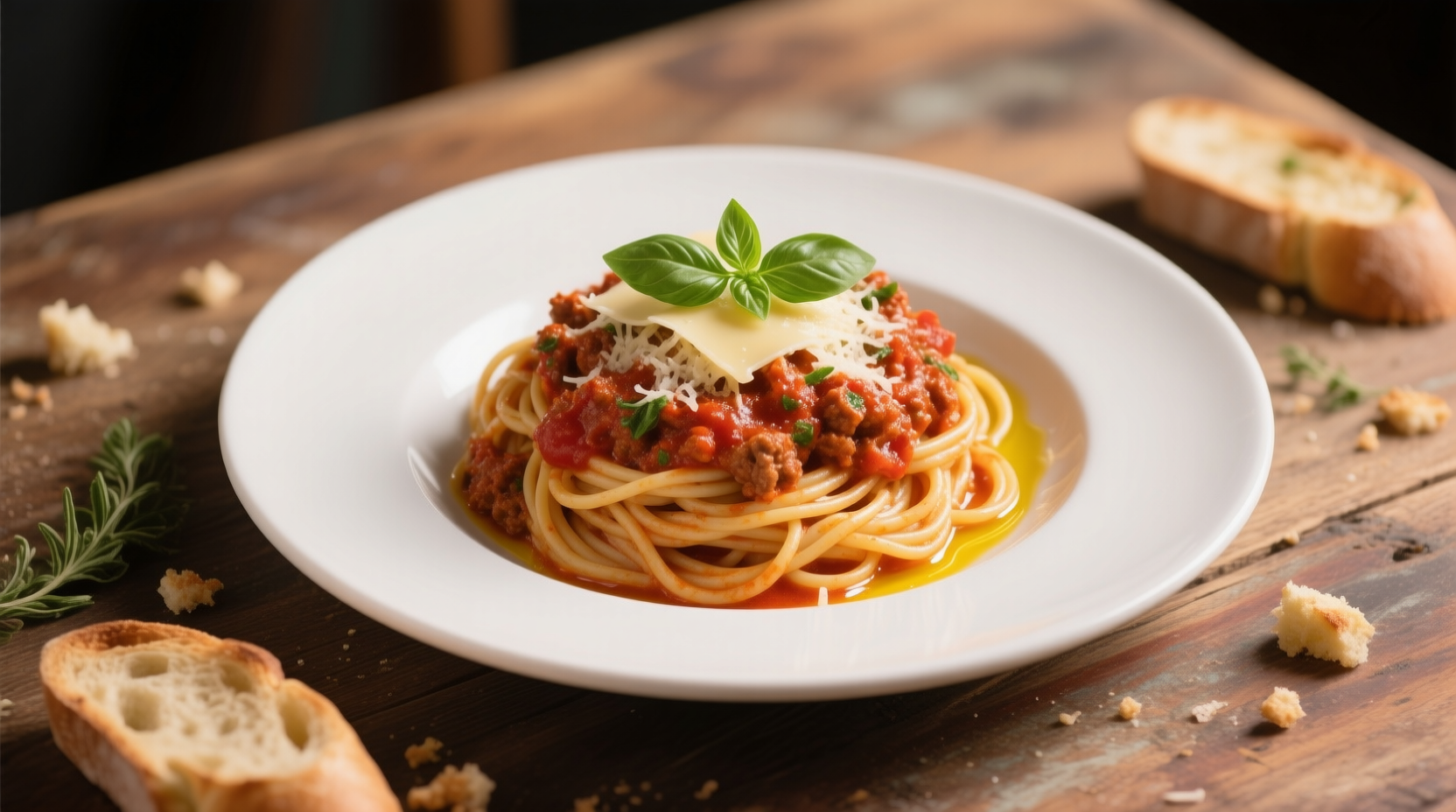Most people think Bolognese belongs to beef. It’s like a secret club that turkey never got invited to. But here’s the truth—when done right, turkey Bolognese doesn’t just rival the beef version, it can outshine it. The key is knowing exactly where turkey behaves differently, and coaxing the depth of flavor that professionals know is possible. This is not your Tuesday-night toss-together pasta. This is a deliberate, slow-simmered, layered sauce that’ll make even Italian grandmothers raise an eyebrow.
If you’ve ever worked in a professional kitchen, you know turkey is leaner. Much leaner. That means less fat, and with it, less flavor—unless you build it. And building it is an art. You don’t just throw ground turkey into a pot and expect magic. You start with the right fat, the right aromatics, and yes, the right patience.
Why Turkey Works in Bolognese (When Done Properly)
Traditional beef Bolognese gets its richness from marbled fat and slow breakdown of collagen. Turkey doesn’t have that same structural generosity, so chefs compensate with technique. The mild flavor profile of turkey actually gives you a blank canvas to layer complexity without fighting heavy beefiness. That means more space for aromatics like fennel, thyme, and bay to shine.
There’s also the nutrition side. Ground turkey often has 40–50% less saturated fat than beef, and that’s no small thing if you’re cooking for health-conscious clients. A 4-ounce portion of lean turkey can clock in at around 170 calories, compared to beef’s 250-plus. You can deliver that indulgent pasta moment without leaving diners feeling heavy or sluggish afterwards.
The Fat Question That Changes Everything
Here’s something I’ve learned after years in restaurant kitchens—turkey needs help with fat, but not just any fat. Olive oil gives it fruitiness, but butter gives it body. The magic? Using both. I start with a tablespoon of butter and two tablespoons of olive oil in the pan. The butter coats the meat with a rich mouthfeel, while the olive oil carries and lifts the herbal aromatics.
Some chefs swear by pancetta as a base note for turkey Bolognese. I’ve done it both ways, and when you want to impress, pancetta wins. Dice it small, render it low and slow until the fat becomes liquid gold. That fat is your flavor foundation before turkey even hits the pan.
The Turkey Selection Matters
Here’s where many home cooks miss the mark—they grab extra-lean ground turkey breast. That’s basically a one-way ticket to dry and crumbly sauce. You want a ground turkey blend with at least 7% fat. That little bit of extra fat makes all the difference in texture and flavor absorption.
And don’t just dump it in the pan and stir until brown. That’s the fastest way to squeeze out moisture and end up with flavorless crumbs. Instead, press it gently into the pan and let it develop a crust before breaking it up. That’s your Maillard reaction moment—the browning that builds savory depth.

The Vegetable Base: Sofrito’s Italian Cousin
Classic Bolognese starts with soffritto—finely chopped onion, carrot, and celery. But with turkey, I tweak the ratio. A little more carrot, slightly less celery. Why? Carrot’s natural sweetness compensates for turkey’s milder profile, while celery can overpower if too assertive.
I dice my vegetables almost to a paste. This way, they melt into the sauce, enriching texture without obvious chunks. Sweat them in the fat until translucent and fragrant, around 10 minutes, no rushing. Professionals know: impatience here will haunt the final sauce.
Building Layers of Flavor: The Wine & Tomato Moment
Once the turkey is browned and vegetables are softened, it’s wine time. Red or white? This is a hot debate. For beef Bolognese, red wine is common, but for turkey, I lean toward dry white wine. Sauvignon Blanc or Pinot Grigio keeps the sauce bright and doesn’t weigh down the turkey.
After the wine reduces by half, add tomato paste. And not just a spoonful—go for a generous two tablespoons, toasting it in the pan for at least 2 minutes. This caramelizes the paste and deepens its umami punch.
Canned tomatoes are next, and I prefer San Marzano. They’re sweeter, less acidic, and more consistent in professional kitchens. Crush them by hand for a rustic texture, or use a blender if you want a smoother sauce.
The Simmer That Separates Pros from Amateurs
Now comes the part most home cooks get wrong—they don’t simmer long enough. Turkey needs time for the sauce to absorb and unify. I give it at least 45 minutes, sometimes up to 1.5 hours if I’m going for maximum depth. Keep the heat low and the lid partially on to control evaporation.
During the simmer, don’t just walk away. Stir occasionally and taste constantly. If the sauce tastes flat after 30 minutes, add a small splash of milk. Yes, milk. Dairy softens acidity and gives a creamy roundness that turkey alone can’t provide.
Seasoning Beyond Salt and Pepper
If you stop at salt and pepper, you’re leaving 70% of your flavor potential untapped. A small pinch of nutmeg does wonders here, echoing traditional Bolognese techniques from Emilia-Romagna. A dried bay leaf adds subtle perfume. And fresh thyme—added halfway through cooking—keeps the sauce lively.
Some chefs add a Parmesan rind during the simmer. It’s a pro move. The rind releases salty, nutty notes slowly, then you just fish it out before serving. You can’t bottle that depth.

The Pasta: Why Spaghetti Works (But Needs Help)
Spaghetti isn’t the traditional pasta for Bolognese. Tagliatelle or pappardelle would be the classic choice. But spaghetti is popular and widely available, so if you’re using it, make it work harder for you.
Salt the pasta water like the Adriatic—at least 1 tablespoon per 4 quarts of water. Undercook the spaghetti by one minute, then finish it in the sauce. This allows the pasta to absorb the flavors rather than just wearing them like a coat.
And yes, add some pasta cooking water to the sauce as you combine. The starch emulsifies with the fats, creating that restaurant-level glossy cling.
Garnishes & Final Touches
When plating, I’m ruthless about garnish. No sad sprinkle of dried parsley from a jar. Fresh basil, chiffonade-cut, adds brightness. A heavy snowfall of freshly grated Parmigiano-Reggiano pulls the whole dish together.
If you really want to level up, finish with a drizzle of good extra-virgin olive oil right before serving. It adds aroma and silkiness that makes the dish feel luxurious without overpowering the turkey.
Common Mistakes to Avoid
One big mistake? Using watery vegetables. Always pat your diced vegetables dry before cooking. Water is the enemy of caramelization.
Another is over-stirring the turkey during browning. You want those deep, toasty bits stuck to the pan—they’re flavor bombs. Deglaze them, don’t destroy them.
And please, don’t simmer the sauce with the lid sealed tight. You’ll trap steam, diluting your sauce instead of concentrating it.
Turkey Bolognese Spaghetti: Step-by-Step (Professional Method)
Ingredients
- 1 lb ground turkey (7% fat)
- 2 tbsp olive oil
- 1 tbsp unsalted butter
- 2 oz pancetta, diced (optional)
- 1 medium onion, finely diced
- 2 carrots, finely diced
- 1 celery stalk, finely diced
- 2 tbsp tomato paste
- 1 cup dry white wine
- 1 can (28 oz) San Marzano tomatoes, crushed
- 1 cup low-sodium chicken stock
- 1 cup whole milk
- 1 bay leaf
- 1/4 tsp nutmeg
- Fresh thyme sprigs
- Kosher salt & freshly cracked black pepper
- 12 oz spaghetti
- Parmigiano-Reggiano, grated
- Fresh basil, chiffonade
Method
- Heat olive oil and butter in a large heavy pot over medium-low heat. If using pancetta, add now and render slowly until crisp.
- Add onion, carrot, and celery. Sweat gently until translucent, about 10 minutes.
- Increase heat to medium. Add turkey, pressing into the pan. Let brown undisturbed for 3–4 minutes before breaking up. Cook until lightly browned.
- Stir in tomato paste. Cook 2 minutes, toasting it.
- Deglaze with white wine, scraping up browned bits. Reduce by half.
- Add crushed tomatoes, chicken stock, bay leaf, nutmeg, and thyme. Bring to a gentle simmer.
- Simmer uncovered for 15 minutes, then partially cover and cook another 30–45 minutes, stirring occasionally.
- Add milk in the final 10 minutes of cooking. Adjust seasoning.
- Cook spaghetti until 1 minute shy of package directions. Reserve 1 cup pasta water.
- Toss pasta with sauce, adding pasta water as needed for emulsification.
- Plate with Parmesan, basil, and a drizzle of olive oil.
Why This Version Wins in Professional Kitchens
This recipe works because it respects turkey’s unique character instead of forcing it to mimic beef. Every step—from the fat choice to the wine selection—is calibrated to maximize flavor without heaviness. In professional kitchens, dishes like this aren’t just about taste; they’re about balance, texture, and creating a plate that people remember hours later.
Final Thoughts
Turkey Bolognese Spaghetti, when done right, isn’t a compromise—it’s an upgrade. It’s cleaner but still indulgent. It’s familiar yet surprising. And it shows how understanding the nuances of an ingredient can elevate a dish far beyond its basic recipe.
Cook it slow, treat each stage like it matters (because it does), and you’ll have a sauce that tells a story on every forkful.
FAQs
Can I use ground turkey breast only for Bolognese?
You can, but it’ll be drier—use a blend with at least 7% fat for better flavor and texture.
Is spaghetti the best pasta for Turkey Bolognese?
Not traditionally, but with proper finishing in sauce, spaghetti works beautifully.
Why do you add milk to the sauce?
Milk softens acidity and adds creaminess to balance the lean turkey.
Can I replace white wine with red wine?
Yes, but white wine keeps the sauce lighter and brighter for turkey.
How long should I simmer Turkey Bolognese?
At least 45 minutes, preferably up to 1.5 hours for deep flavor.
Do I need to add pancetta?
No, but pancetta adds richness and a savory base note worth trying.
Why toast tomato paste before adding liquids?
Toasting caramelizes the paste, giving the sauce a richer, more complex taste.
Can I make this sauce ahead of time?
Yes, it tastes even better the next day after flavors meld.
How do I keep the turkey from drying out?
Brown it gently, don’t overcook, and finish with pasta water for moisture.
Can I freeze Turkey Bolognese?
Yes, it freezes well for up to 3 months in airtight containers.

Mariana is a passionate home cook who creates delicious, easy-to-follow recipes for busy people. From energizing breakfasts to satisfying dinners and indulgent desserts, her dishes are designed to fuel both your body and hustle.
When she’s not in the kitchen, she’s exploring new flavors and dreaming up her next recipe to share with the Foodie Hustle community.

